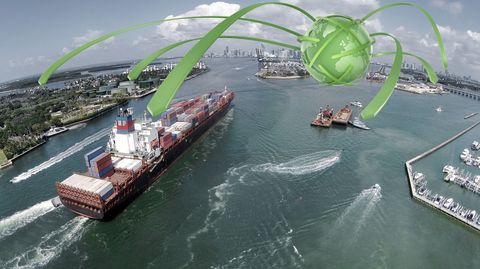Free trade agreements have been a key element of international efforts to expedite the movement of goods across national borders in the last few years, with governments worldwide taking steps to reduce the amount of red tape involved in importing and exporting.
A key player in this has been the World Trade Organization (WTO), the body dedicated to setting and monitoring the global rules of trade between nations. It was the WTO that was responsible for spearheading the Trade Facilitation Agreement (TFA), which has the potential to be one of the most significant and broad-ranging trade deals in recent memory.
Work still needs to be done by the WTO's various member nations to ensure the provisions of the TFA deal are implemented in a timely manner, but as progress continues to be made, the onus falls on export-driven companies to make themselves aware of how the agreement could affect them in the near future.
Summary
The WTO's members concluded negotiations on the TFA at the Bali Ministerial Conference in December 2013, making it the first agreement of its kind to be concluded at the WTO by all of its members.
Designed specifically to reduce the amount of red tape encountered by companies of all sizes engaged in international trade, the deal is intended to facilitate the movement, release and clearance of goods, including goods in transit, on a global basis.
It will also establish measures for effective cooperation between customs and other appropriate authorities on trade facilitation and customs compliance issues, while improving transparency, tackling corruption and making it easier to participate in global value chains.
According to the WTO's World Trade Report released from October 2015, the TFA has the potential to increase global merchandise exports by up to $1 trillion (€897.91 billion) per annum. Developing countries will account for more than half of the available gains.
Key provisions
The TFA is broken down into three main sections, each pertaining to a different core provision:
- Section I consists of provisions for expediting the movement, release and clearance of goods, including goods in transit. It contains clarification of and improvements to the relevant articles of the General Agreement on Tariffs and Trade from 1994, while also setting out provisions for customs cooperation.
- Section II contains special and differential treatment provisions allowing developing countries to determine when they will implement individual provisions of the agreement, according to their ability to do so, as well as highlighting the areas where they will need technical assistance and support for capacity building in order to achieve compliance. Countries will need to categorize the various provisions of the TFA to determine what special allowances they will need; Category A provisions will be implemented straight away, whereas Category B allows these poorer nations to take advantage of a transitional period, and Category C provides extra transition time and practical support.
- Section III details the process of establishing a permanent committee on trade facilitation at the WTO, requiring members to set up a national committee to facilitate the domestic coordination and implementation of the TFA's provisions.
The progress so far
The WTO's members are now in the process of adopting measures needed to bring the agreement into force - a milestone that will be reached once two-thirds of the members have completed their domestic ratification processes.
Sri Lanka became the latest WTO member to ratify the TFA at the end of May, meaning 81 countries have now greenlit the deal. This represents two-thirds of the total number of members needed to bring the agreement into force, with Mexico, Peru, Nigeria and Cameroon among those said to be close to an official ratification.
So far, 87 developing and least-developed country (LDC) members have submitted Category A notifications, meaning they have informed the WTOs of the provisions of the TFA they will be able to implement as soon as the agreement takes effect, or after a period of one year for LDCs.
However, only five members - Georgia, Mauritius, Malawi, the Solomon Islands and Zambia - have submitted their Category B and C notifications, prompting Esteban Conejos, chairman of the WTO's preparatory committee on trade facilitation, to urge other countries to do so as soon as possible.






